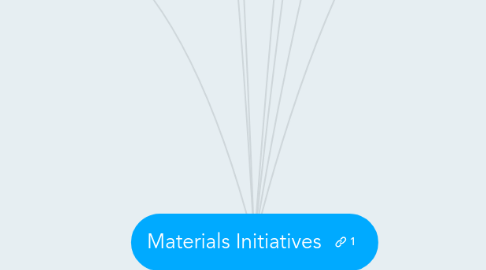
1. Education
1.1. Guidance for Leadership in Sustainable Purchasing
1.2. ASID Protocols for Health and Wellness in Design
1.3. USGBC Materials Guidebook
1.4. ACLCA IERE & Earthsure EPDs
1.5. BuildingGreen articles and webcasts
1.6. Six Classes
2. Product-Related Standards & Certifications
2.1. Indoor Air Quality
2.1.1. Greenguard
2.1.2. SCS Indoor Advantage
2.1.3. FloorScore
2.1.4. CRI Green Label Plus
2.2. Multi-Attribute
2.2.1. Blue Angel
2.2.2. Living Product Challenge
2.2.3. NSF International Sustainability Standards
2.2.3.1. NSF/ANSI-140 Sustainabililty Assessment for Carpet
2.2.3.2. NSF/ANSI 332 Sustainability Assessment for Resilient Floor Coverings
2.2.3.3. NSF/ANSI 336 Sustainability Assessment for Commercial Furnishings Fabric
2.2.3.4. NSF/ANSI 342 Sustainability Assessment for Wallcovering Products
2.2.3.5. NSF/ANSI 347 Sustainability Assessment for Single Ply Roofing Membranes
2.2.4. ANSI A138.1 Green Squared – American National Standard Specifications for Sustainable Ceramic Tiles, Glass Tiles, and Tile Installation Materials
2.2.5. Cradle to Cradle
2.2.5.1. C2C Material Health Certification
2.2.6. BIFMA level
2.2.6.1. ANSI/BIFMA e3-2014 Furniture Sustainability Standard
2.2.7. Facts
2.2.8. Ecologo
2.3. Forest Management
2.3.1. Forest Stewardship Council
2.3.2. Sustainable Forestry Initiative
2.3.3. PEFC
2.3.4. CSA Forestry Standard
2.4. Byggvarubedömningen (BVB)
2.5. BASTA
2.6. Certifiers
2.6.1. Scientific Certification Systems
2.6.2. ULe
2.6.3. NSF International
2.6.4. Green Circle
2.6.5. Tox Services
2.6.6. TUV
2.6.7. Eurofins
2.7. Process Standards
2.7.1. ASTM E-60, ASTM PCRs & EPDs
2.7.2. BS EN 15804 Sustainability of construction works, PCRs, EPDs
2.7.3. ASTM E60.01 Subcommittee E60.01 on Buildings and Construction (specifically WK44075) “Standard Practice for Issuing Product Transparency Declarations”
2.7.4. ASTM E2921 “Standard Practice for Minimum Criteria for Life Cycle Assessments for Use with Codes and Rating Systems”
3. Research
3.1. Social Hotspots Database
3.2. Building Product Ecosystems
3.3. EPA - Design for Environment
3.4. Lawrence BerkeleyLab - LIGTT 50 products for sustainable world
3.5. Healthy Hospital Initiative - Materials Research
3.6. Syracuse University Center for Excellence
3.7. EDRA - Materials
3.8. Social Research - USGBC Demographics
3.9. U of Minnesota Center for Sustainable Building Research
3.10. MIT - Center for Concretre Research
3.11. Univ of Utah - Cross Laminated Timber
3.12. Joachim Mitchell - U of Columbia
3.13. USDA - Forest Product laboratory
3.14. Yale - Green Chemistry program/ John Warner and Env Performance Index/Materials aspect
4. Tools & Databases
4.1. Pharos
4.2. Gigabase
4.3. Environmental Impact Estimator
4.4. Economic Input-Output LCA Tool
4.5. GSA SFtool
4.6. Tally
4.7. Material IQ
4.8. US Life Cycle Inventory Database
4.9. Inventory of Carbon and Energy Database
4.10. AEC Design Transparency
4.11. eToolLCD
4.12. Green Footstep
4.13. Open LCA
4.14. TRACI
4.15. BEES
4.16. BIRDS
4.17. BLP Butterfly
4.18. EcoScorecard
4.19. BuildingGreen/Designer Pages
4.20. GaBi
4.21. MSDS Data Sheets, Training, Reporting
4.22. Sima Pro
4.23. Sphere-E
4.24. CSI GreenFormat
4.25. SmithGroupJJR HPD Library
4.26. EDR LBC Materials Petal Products Database
5. Green Codes & Building Rating Systems & Guidelines (influencing the products and materials markets)
5.1. LEED v4 Materials Credits
5.2. WELL Building Standard
5.3. GreenGlobes
5.4. Living Building Challenge Materials Petal
5.4.1. Living Product Challenge
5.5. IgCC
5.6. ASHRAE 189
6. Policy & Advocacy
6.1. 2030 Challenge for Products
6.2. AEC Transparency
6.3. Design for the Environment (DfE) Program
6.4. Transparency Project Precautionary List
6.5. Environmental Defense Fund
6.6. Green Science Policy Institute
6.7. Safer States
6.8. Environmental Working Group
6.9. Institute of Medicine
6.10. Green Chemistry and Commerce Council
7. Regulation
7.1. California Prop 65
7.2. REACH
7.3. CDPH Standard Method
7.4. CARB
7.5. Washington State Alternatives Assessment
7.6. California Safer Consumer Products Act
7.7. Toxic Substances Control Act
7.8. International Restricted Substances Lists
8. Disclosure
8.1. Health Product Declaration (HPD) v2
8.2. 2030/Cannon EPD summaries
8.3. Declare
8.4. Transparency Reports
8.5. GHS (new version MSDS)
8.6. UL Environment - EPD
8.7. Chemical Footprint Project
8.8. Chemicals in Products (CiP) Programme
8.9. GreenScreen
8.10. Harmonization Task Group
8.11. USGBC Supply Chain Optimization Working Group (SCOWG)
8.12. The International EPD System
9. Legend:
9.1. Scope
9.1.1. Energy/Carbon
9.1.2. Health
9.1.3. Environment
9.1.4. Social
9.2. Applicability
9.2.1. 100 Level - Awareness
9.2.2. 200 Level - Understanding
9.2.3. 300 Level - Implementation
9.2.4. 400 Level - Mastery
9.3. Created for AIA by:
9.3.1. BuildingGreen, Inc.
